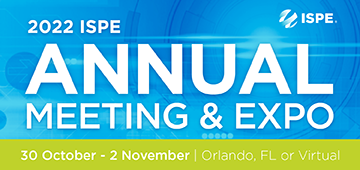Path to a Global Dossier: A Glimpse of the Future?

A thought-provoking session held during the 2021 ISPE Annual Meeting & Expo provided insight into how the Overall Quality Summary can provide an ideal opportunity to provide a comprehensive view of the control strategy and discuss patient risk-benefit.
Speakers and panelists in the session included:

The session was kicked off by Dr. Tim Watson who presented data from 14 companies and 112 marketing applications on the rate of acceptability of their control strategy. Although each company submitted a single global control strategy, the data presented showed that the control strategy was not accepted without modification by well-established ICH markets, namely, USA, Japan, EU, and Canada. In fact, when looking across key control strategy documents in Module 3 of the Common Technical Document, there was only about a 50% chance of having all four markets accept both the substance and product control strategy. The data confirmed industry’s view that during the last decade, there has been regulatory divergence regarding the interpretation of ICH guidelines. Localized interpretations of ICH guidance that result in differing technical requirements and/or control strategies pose significant challenges for a global industry. As a result, the increased complexity of manufacturing supply chains coupled with the burden of maintaining compliance with diverse regulatory expectations creates an obstacle to continual improvement and innovation and can lead to temporary drug shortages in some markets.
Dr. Ciby Abraham then provided a glimpse into the future with a presentation on the potential of a Patient Centric risk-based module 2 Quality Summary. Regulators have expressed a desire for future CMC submissions to have more structured data and less narrative. This desire makes sense given the possibilities of Artificial Intelligence and Machine Learning, but the presentation asked how standardized data and rich data submission will link to patients. This presentation reinforced the preceding presentation by Tim Watson on how varying CMC submission requirements and quality standards for ICH and non-ICH countries cause global delays to approval of new medicines, even though the quality of the product supplied is the same. Differing global Post Approval Change requirements --where the supply of medicines to patients can be interrupted – pose an even greater challenge. The presentation provided insight into how an Overall Quality Summary similar to an Integrated Summary of Safety and Integrated Summary of Efficacy can provide an ideal opportunity to provide a comprehensive view of the control strategy and discuss patient risk-benefit.
Unfortunately, the QOS, the current Module 2 summary, is not harmonized across the ICH regions and no Module 3 document provides a logical spot to discuss either the overall control strategy or patient risk-benefit. ISPE’s Regulatory Quality Harmonization Committee’s North America Regional Focus Group is working to develop a proposal that may provide this missing link.
Next, Dr. Rodrigo Palacios provided the audience with a vision of the future in a presentation on Cloud-Based Submissions and Structured Data Submissions. The presentation described how Accumulus Synergy is exploring a radical transformation from a static transactional exchange between sponsors and regulators to a dynamic approach capable of exploiting the full range of data sources and digital tools. Accumulus Synergy is working with FDA’s Oncology Center of Excellence (OCE) to take this aspiration from theory to practice via execution of use cases in partnership with not only FDA but a number of regulators. Together these global health authorities will design, develop, and deploy a full-scale, cloud-based solution enabling collaborative review of structured data submissions by regulators. Dr. Palacios presented the long-term aspirations and regulatory design considerations and also showed how tangible progress is being made in the near term via use cases with regulators for parallel review and CMC Stability Data Automation, Usage and Exchange. These use cases are intended to provide a proof of concept that can be scaled to all aspects of regulatory filings.
A major area of divergence in CMC requirements is with post approval submission. Drs. Sarah Pope Miksinski and Angela Currie introduced the idea of taking a patient centricity approach in their presentation on Post Approval Space, Balancing the Data with the Story. Due to the overall complexity of the global market and combined with recent learnings from the COVID-19 pandemic, significant efforts remain focused on the challenge of efficient product launch and continued supply following approval. The presentation identified various post-approval opportunities with a primary focus on patient centric approaches. Many factors play into this focus including post-approval efficiency (Q12), global-based post-approval opportunities, mutual reliance, risk-based inspections, and benefit/risk in the post-approval space.
The session concluded with a presentation by Dr. Lawrence Yu who described his vision of the ICH M4Q Revision and the opportunity this revision provides to achieve a Global Quality Dossier through greater worldwide harmonization. Dr. Yu reviewed the status of ICH’s efforts and presented the future state of regulatory submission and review for human drugs and biologics. He also discussed the path to get there, including cloud-computing, M4Q revision, structured data standard, and FDA’s regulatory review digitalization effort.











